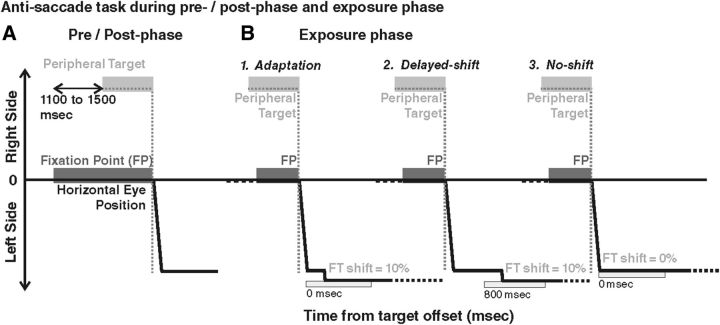Figure 3.
Anti-saccade task during pre-phase, post-phase, and exposure phase. In all cases (pre/post-phase and exposure phase), the FP is presented first, followed by a peripheral target presented in the right visual field (at 9° in these examples). The AS (thick black line) is performed in a self-paced manner to the left visual field (downward deflection). Both FP and target are extinguished at AS onset. In the pre-phase and post-phase (A), no feedback target is provided, whereas in exposure phase (B), a feedback target is systematically presented (FT, light gray rectangle), with different parameters according to the condition. In the adaptation condition (B1), the feedback target is presented at the time of AS completion (0 ms), at a location shifted outward from the AS response endpoint by a shift representing 10% of the AS response amplitude. In the delayed-shift condition (B2), the feedback target is also presented at the shifted location (same 10% shift) but after a 800 ms delay. In the no-shift condition (B3), the feedback target is presented immediately after AS completion (0 ms delay) but at the mirror position of the peripheral target (no shift). Note that, in the pre-phase and post-phase, both rightward AS and rightward and leftward PS were also performed (data not shown).

